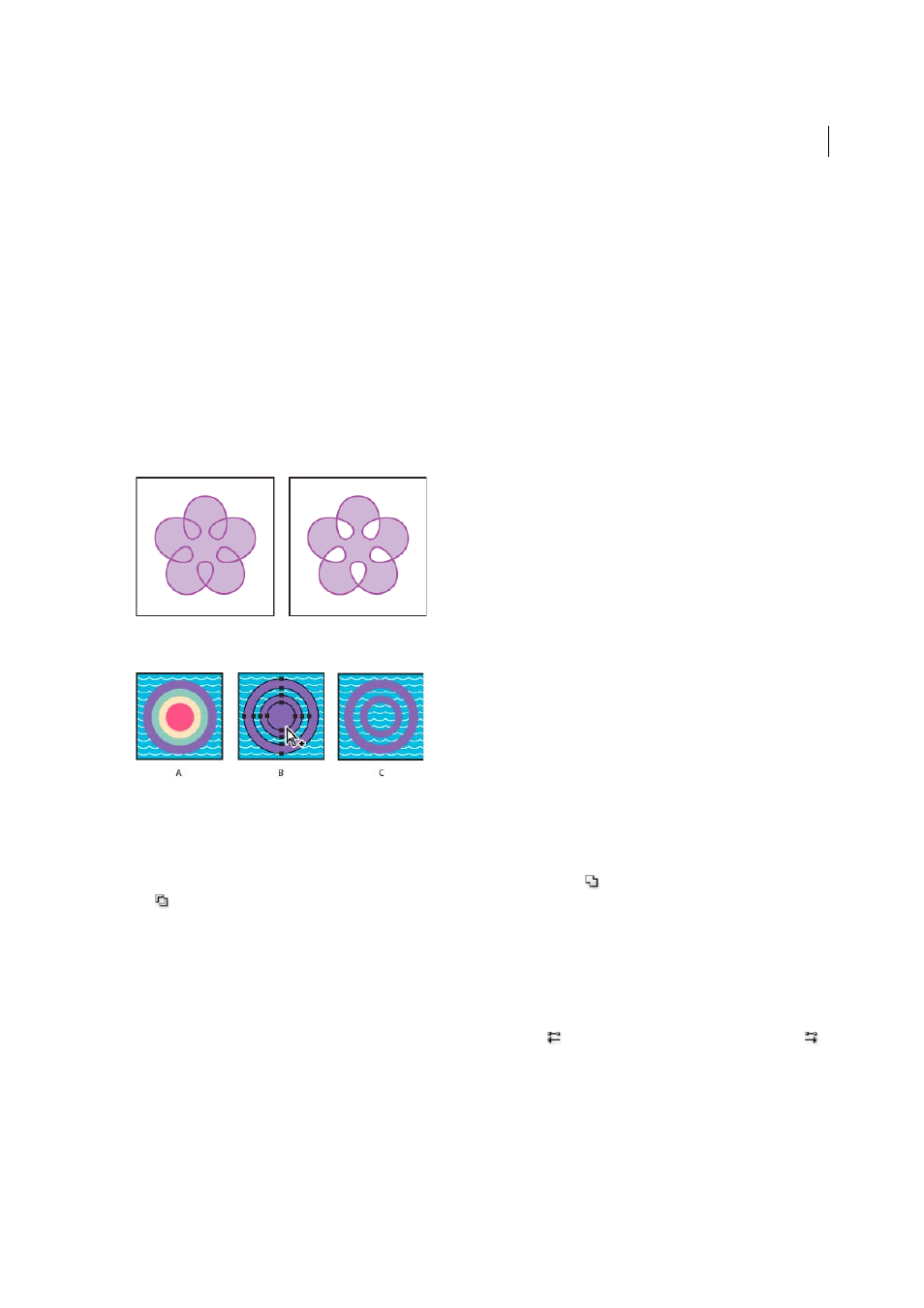Apply fill rules to compound paths, Change the fill rule for a compound path, Change a hole in a compound path to a filled area – Adobe Illustrator CC 2015 User Manual
Page 285: Return a compound path to its original components

280
Reshaping objects
Last updated 6/5/2015
3
Choose Object > Compound Path > Make.
Apply fill rules to compound paths
You can specify whether a compound path is a nonzero winding path or an even-odd path.
Nonzero winding fill rule
Uses mathematical equations to determine if a point is outside or inside a shape. Illustrator
uses the nonzero winding rule as the default rule.
Even-odd fill rule
Uses mathematical equations to determine if a point is outside or inside a shape. This rule is the more
predictable rule because every other region within an even-odd compound path is a hole, regardless of path direction.
Some applications, such as Adobe Photoshop, use the even-odd rule by default, so compound paths imported from
these applications will use the even-odd rule.
Self-intersecting paths are paths that intersect themselves. You can choose to make these paths either nonzero winding
or even-odd, depending on how you want them to look.
When you create a nonzero winding compound path, you can specify whether overlapping paths appear with holes or
are filled by clicking a Reverse Path Direction button in the Attributes panel.
A Four circular paths B Circular paths selected, converted into compound path C Reverse Path Direction applied to innermost path
Change the fill rule for a compound path
1
Select the compound path using the Selection tool or Layers panel.
2
In the Attributes panel, click the Use Non-Zero Winding Fill Rule button
or the Use Even-Odd Fill Rule button
.
Change a hole in a compound path to a filled area
1
Make sure that the compound path uses the nonzero winding fill rule.
2
With the Direct Selection tool, select the part of the compound path to reverse. Do not select the entire compound
path.
3
In the Attributes panel, click the Reverse Path Direction Off button
or the Reverse Path Direction On button
.
Return a compound path to its original components
1
Select the compound path using the Selection tool or Layers panel.
2
Choose Object > Compound Path > Release.
